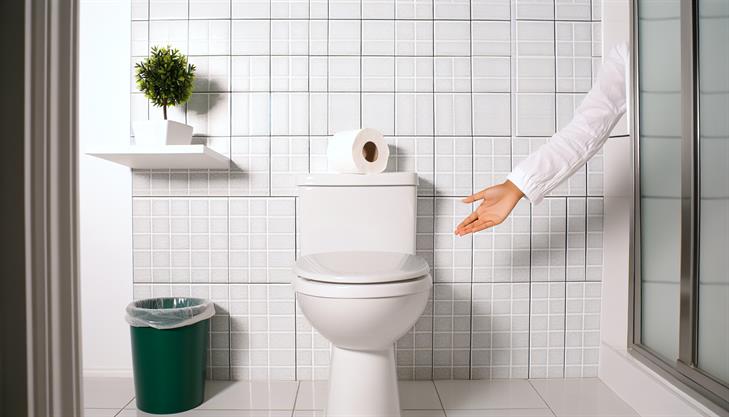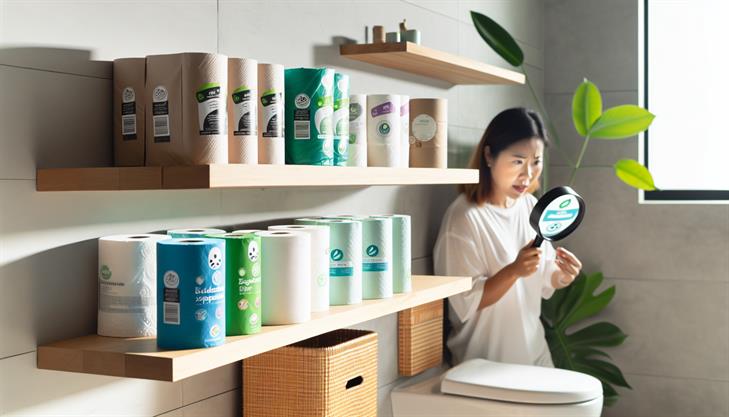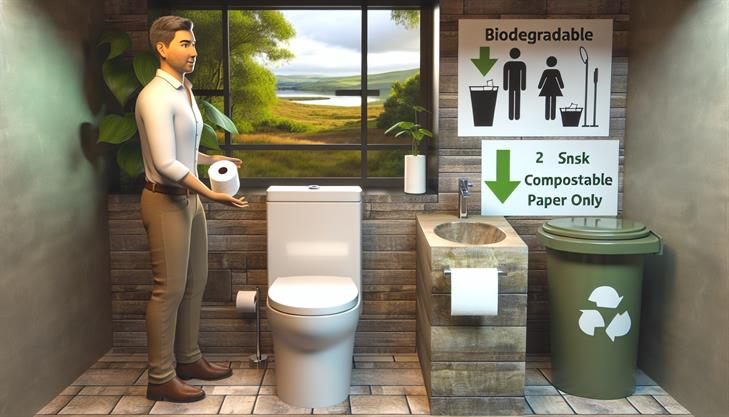In an era where sustainability is no longer just a buzzword but a necessity, every choice we make plays a crucial role in shaping our planet’s future—even down to the kind of toilet paper we use. Yes, you read that right. Beyond the plush softness or ultra-absorbency, the seemingly trivial question of whether toilet paper is biodegradable speaks volumes about our environmental footprint. As we flush our paper away, it doesn’t just vanish; it continues its journey in our ecosystems, potentially affecting water systems, wildlife, and habitats if not properly biodegradable. This guide peels back the layers of the paper trail, helping you understand what "biodegradable" truly means in the context of toilet paper. We’ll dive into why this matters, look at the environmental implications, and empower you with knowledge that could influence your next purchase and positively impact our planet. Ready to uncover the dirt (and flush it responsibly)? Let’s roll!
What Makes Toilet Paper Biodegradable?
Toilet paper is a daily essential in households worldwide, but many people are curious about its environmental impact. A common question is whether toilet paper is biodegradable. Let’s explore what makes toilet paper biodegradable, potential issues, and tips on choosing environmentally friendly options.
Understanding Biodegradability
To determine if toilet paper is biodegradable, it’s essential to understand what biodegradability means. A biodegradable product can be broken down by microorganisms into natural substances such as water, carbon dioxide, and biomass over time. For toilet paper, this process benefits the environment by preventing waste accumulation.
Why Toilet Paper is Generally Biodegradable
Most toilet papers are made primarily from natural fibers like wood pulp, cotton, or bamboo, which are inherently biodegradable. Here’s a simplified breakdown of the process:
-
Material Composition: Since standard toilet paper is made from plant materials, it contains cellulose fibers that microbes can decompose.
-
Breaking Down in Water: Toilet paper is designed to dissolve quickly in water, unlike thicker paper products. This feature helps it break down efficiently after being flushed, preventing blockages in plumbing systems.
-
Decomposition Process: After disposal, microorganisms in sewage systems or compost piles work on decomposing the fibers. The process can take a few weeks to months, depending on moisture, temperature, and microbial activity.
Common Issues in Biodegradability
While most toilet paper is biodegradable, certain factors can affect its breakdown:
-
Added Chemicals: Some toilet papers contain additives like lotions, fragrances, or dye. Although these can improve softness or scent, they might hinder biodegradability.
-
Strength and Durability: Ultra-strong or multi-ply tissues designed for increased durability might take longer to break down compared to single-ply options.
Tips for Choosing Biodegradable Toilet Paper
When selecting toilet paper, consider these tips to ensure you’re choosing an environmentally friendly option:
-
Look for Eco-Certifications: Certifications like the Forest Stewardship Council (FSC) label indicate sustainable sourcing and environmental responsibility.
-
Check for 100% Recycled Content: Opting for toilet paper made from recycled materials can reduce environmental impact.
-
Avoid Added Chemicals: Choose products without added dyes, fragrances, or softening agents, which can delay decomposition.
-
Consider Bamboo Toilet Paper: Bamboo is rapidly renewable and generally more biodegradable, making it a favorable option for eco-conscious consumers.
-
Read Decomposition Rates: Some brands specify decomposition rates on their packaging. Toilet paper that breaks down quickly is less likely to contribute to plumbing issues or environmental harm.
Additional Advice for Effective Disposal
To complement the use of biodegradable toilet paper, consider the disposal environment:
-
Proper Flushing: To prevent clogs, flush only toilet paper and human waste. Avoid tossing paper towels, wipes, or feminine products into the toilet.
-
Composter Use: If you’re committed to minimizing environmental impact, explore composting options. Some biodegradable toilet papers can be added to home compost bins, but ensure they’re free of harmful additives.
In summary, most toilet papers are biodegradable due to their natural fibers and design. However, selecting the right product and disposing of it correctly is crucial to minimizing environmental impact and maintaining plumbing health. By making informed choices, you can support sustainability efforts while meeting your daily needs.
Tips for Choosing Eco-Friendly Toilet Paper
Toilet paper is one of the everyday items we often overlook when considering environmental impact. However, understanding whether toilet paper is biodegradable is crucial for making eco-friendly choices. Typically, toilet paper is designed to be biodegradable due to its thin and delicate nature. This means that it can break down naturally in the environment through the action of microorganisms, such as bacteria and fungi, without leaving any harmful residues.
To begin, not all toilet paper is created equal in terms of biodegradability. Here’s a step-by-step guide to help assess whether your toilet paper is environmentally friendly:
-
Examine the Ingredients: Look at the materials used in your toilet paper. Biodegradable toilet paper is usually made from natural fibers such as bamboo or recycled paper. Bamboo is particularly noted for being fast-growing and sustainable, while recycled paper saves trees and reduces waste.
-
Check for Chemical Additives: Avoid toilet paper that contains heavy dyes, fragrances, or bleaching agents. These chemicals can hinder the breakdown process in nature and may introduce toxins into the environment. Opt for unbleached or minimally processed options if possible.
-
Assess the Ply and Thickness: While luxurious, multi-ply sheets and extra-thick toilet paper can be less biodegradable as they take longer to break down. Single-ply options often dissolve faster and are more septic-safe.
-
Conduct a Dissolvability Test: A simple home test to determine biodegradability is to tear a few squares of the toilet paper and place them in a jar of water. Shake the jar and observe how quickly the paper disintegrates. If it breaks apart easily, it is likely biodegradable.
-
Look for Certifications: Seek out toilet paper that carries certifications from reputable environmental organizations. Labels such as FSC (Forest Stewardship Council) or other eco-labels can ensure that the products meet certain environmental standards.
-
Consider the Packaging: To enhance eco-friendliness, look for brands that use recyclable or compostable packaging. Reducing plastic waste is an essential part of selecting sustainable products.
Some common issues with non-biodegradable toilet paper include potential plumbing clogs and harm to septic systems, as these types do not break down efficiently. Moreover, they may contribute to larger waste management problems when disposed of in landfills.
Additional advice for choosing the best biodegradable toilet paper includes supporting brands with transparent sustainability practices. It’s worth researching companies that prioritize reducing their carbon footprint and engaging in ethical production methods.
In summary, considering whether toilet paper is biodegradable involves checking its materials, processing, and environmental certifications. By following these guidelines, you can make a conscious choice that benefits both your home’s plumbing and our planet. Remember, small changes in your everyday habits can add up to significant environmental impacts.
Comparing Biodegradable vs. Non-Biodegradable Options
Toilet paper is a staple in households worldwide, but many people often wonder, "Is toilet paper biodegradable?" Understanding the biodegradability of toilet paper is essential for making eco-conscious choices and ensuring your plumbing system operates efficiently. Let’s explore what makes toilet paper biodegradable and how you can select options that align with your environmental values.
What Makes Toilet Paper Biodegradable?
Biodegradable materials are those that can break down naturally through the action of microorganisms, such as bacteria and fungi, without leaving harmful residues. Toilet paper is typically made from a combination of cellulose fibers derived from wood pulp. The key to its biodegradability lies in its composition and manufacturing process:
-
Material Composition: Most toilet paper is made from natural materials like virgin pulp, recycled paper, or a combination of both. These materials are generally biodegradable, allowing them to break down easily in water.
-
Manufacturing Process: Toilet paper undergoes minimal chemical treatment compared to other paper products. The lack of heavy coatings or artificial additives means it can decompose more readily when exposed to moisture and microbes.
How to Choose Biodegradable Toilet Paper
When selecting toilet paper that is truly biodegradable, consider the following tips:
-
Check the Ingredients: Look for toilet paper made from 100% recycled materials or sustainably sourced virgin pulp. Brands often specify this on their packaging along with eco-certifications.
-
Avoid Added Chemicals: Opt for products that are free of dyes, fragrances, and bleach. These additives can hinder biodegradation and potentially contribute to environmental harm.
-
Consider Thickness and Ply: While thicker, multi-ply toilet papers may feel softer and stronger, they might not break down as easily. Choose single-ply or rapidly disintegrating options for a more biodegradable choice.
Proper Disposal for Maximum Biodegradability
Even biodegradable toilet paper requires proper disposal to ensure it breaks down efficiently:
-
Use Designated Facilities: When flushing toilet paper, make sure it goes into a well-maintained plumbing system or a septic tank designed to handle biodegradable waste. Regular maintenance of these systems is crucial for preventing clogs and ensuring effective breakdown.
-
Composting Alternative: While not a common practice, some particularly eco-minded households may choose to compost unsoiled toilet paper in a dedicated composting system. Ensure that your compost is hot enough to break down paper materials effectively.
Common Issues and Tips
-
Clogging Concerns: Even biodegradable toilet paper can cause clogs if used in excessive quantities or flushed into outdated plumbing systems. Use the appropriate amount and keep plumbing conditions in mind.
-
Septic System Tips: If your home uses a septic system, choose toilet paper labeled as "septic safe," which indicates it dissolves more quickly and reduces the risk of system obstruction.
In conclusion, the answer to "Is toilet paper biodegradable?" is generally yes, as long as you choose products made from natural materials and dispose of them properly. By being mindful of your choices, you can help reduce your environmental footprint while keeping your home’s plumbing systems functional and trouble-free.
How to Dispose of Toilet Paper Responsibly
When considering the environmental impact of our daily habits, one common question is whether toilet paper is biodegradable. Understanding this is crucial for adopting responsible disposal practices and ensuring minimal harm to the environment.
Is Toilet Paper Biodegradable?
Toilet paper is generally designed to be biodegradable. Most toilet paper is made from natural materials, primarily wood pulp, which breaks down over time. This breakdown process is facilitated by the paper’s thinness and its exposure to water, which encourages decomposition. However, how quickly and effectively toilet paper biodegrades can depend on several factors including the type of toilet paper, the environment, and the disposal method.
Types of Toilet Paper:
-
Conventional Toilet Paper: Made from virgin wood pulp, this is typically more biodegradable due to fewer alterations in its manufacturing process. However, it does involve cutting down trees, which can have environmental implications.
-
Recycled Toilet Paper: Often the more eco-friendly choice, recycled toilet paper uses less virgin material and can break down just as effectively. It reduces deforestation and conserves energy in production.
-
Scented or Colored Toilet Paper: These types are less ideal for the environment as they may contain dyes and chemicals that can hinder biodegradability and introduce pollutants.
How to Dispose of Toilet Paper Responsibly:
To ensure your toilet paper biodegrades effectively, consider these key steps:
-
Proper Flushing: Always flush toilet paper down the toilet unless restricted by your plumbing system or local sewage treatment guidelines. Toilet paper is designed to dissolve in water, unlike other paper products that may lead to blockages.
-
Avoid Septic System Overload: If you’re using a septic system, use septic-safe toilet paper. This type dissolves more rapidly and reduces the likelihood of clogging or damaging the system.
-
Composting: In some eco-friendly setups, composting toilet paper is an option. Ensure the paper is free from non-biodegradable additives or chemicals. This involves setting up a proper composting system that can handle human waste, which may require more advanced management.
-
Reduce Waste: Choose to use less toilet paper where possible. Stepping back on usage not only helps the environment but also reduces the demand for its production.
Common Issues and Tips:
-
Clogging: If you’re experiencing frequent plumbing issues, refrain from flushing any toilet paper until your plumbing system has been assessed. Consider using thinner, septic-safe paper.
-
Sustainability Concerns: Opt for recycled or sustainably-sourced toilet paper to lessen environmental impacts.
-
Improper Use: Avoid flushing wipes, paper towels, or any other non-toilet-paper products to prevent system damage and environmental harm.
The main takeaway is that yes, toilet paper is biodegradable, but responsible disposal practices amplify its environmental benefits. These steps ensure that toilet paper, when used and disposed of properly, can be part of a sustainable lifestyle. Adjusting our habits with these considerations in mind not only aids in personal convenience but also contributes to broader environmental conservation efforts.
Troubleshooting Common Environmental Concerns
Toilet paper is a ubiquitous household item, but as environmental concerns grow, more people are asking, "Is toilet paper biodegradable?" Understanding this aspect can help in making more eco-friendly choices and addressing common environmental issues.
Is Toilet Paper Biodegradable?
Yes, most toilet paper is biodegradable. This is primarily due to its composition: toilet paper is typically made from short fibers that quickly break down in water. This ensures that it disintegrates efficiently when flushed, causing minimal impact on wastewater systems and the environment.
Factors Affecting Biodegradability
-
Material Composition: Standard toilet paper is made from either virgin wood fibers or recycled materials. Both are designed to be biodegradable, but recycled options may break down slightly faster due to shorter fiber lengths.
-
Additives: Some toilet paper products include lotions, perfumes, or dyes which can influence the rate of biodegradation. When selecting toilet paper, opt for unscented, undyed options for quicker breakdown.
-
Thickness and Ply: Multi-ply toilet papers are thicker and may take longer to break down compared to single-ply varieties. If biodegradability is a concern, single-ply is typically more eco-friendly.
Steps to Ensure Toilet Paper Disposal is Environmentally Friendly
-
Choose the Right Product: Select toilet paper labeled as biodegradable or septic safe. These products are designed for easy decomposition in water systems and natural environments.
-
Limit Usage: Reducing usage can directly decrease environmental impact. Consider using only the necessary amount and explore alternatives such as bidets which significantly reduce the need for toilet paper.
-
Proper Disposal: Always dispose of toilet paper by flushing it in a designed wastewater system where it can naturally degrade. Avoid composting it unless it is specifically labeled as compostable and free from synthetic additives.
-
Observe Water Consumption: Using excessive water to flush can hinder the decomposition process. Ensure that your plumbing is functioning correctly to avoid unnecessary water usage.
-
Composting: If you have a closed-loop compost system and the toilet paper is free from additives, it can be added to compost to break down naturally over time, enriching the soil.
Common Issues and Troubleshooting
-
Clogged Drains: Even biodegradable toilet paper can contribute to clogs if overused. This issue can be mitigated by flushing regularly and using an appropriate amount.
-
Septic System Concerns: For those on septic systems, ensure to use toilet paper that is specifically labeled as septic-safe to prevent issues with tank breakdown.
Additional Tips
-
Educational Initiatives: Raise awareness in your household or community about the environmental impact of toilet paper and promote responsible usage.
-
Explore Alternatives: Consider bamboo toilet paper, which often decomposes faster than traditional wood pulp-based papers, providing a more sustainable option.
Toilet paper, when chosen and used correctly, can be a biodegradable product that minimally impacts the environment. By considering material composition, opting for eco-friendly products, and following proper disposal methods, you can significantly reduce your ecological footprint.
In conclusion, understanding the biodegradability of toilet paper is essential for making environmentally conscious choices. We’ve explored that most conventional toilet paper is indeed biodegradable, breaking down within a few weeks to a few months under the right conditions. This property makes it a better choice for those concerned with reducing their environmental impact, especially compared to non-biodegradable alternatives. However, it’s important to consider factors such as the use of recycled materials, chemicals in production, and packaging, which can affect the overall ecological footprint of your toilet paper.
Empowering ourselves with this knowledge allows us to make informed decisions that align with our sustainability goals. By opting for toilet paper made from recycled materials or sourced from sustainably managed forests, we can minimize our environmental impact.
As a final tip, consider reducing the amount of toilet paper you use by investing in bidets or washable cloths, which significantly decrease paper consumption and contribute positively to environmental preservation. Every small effort counts in promoting a greener and more sustainable future.


